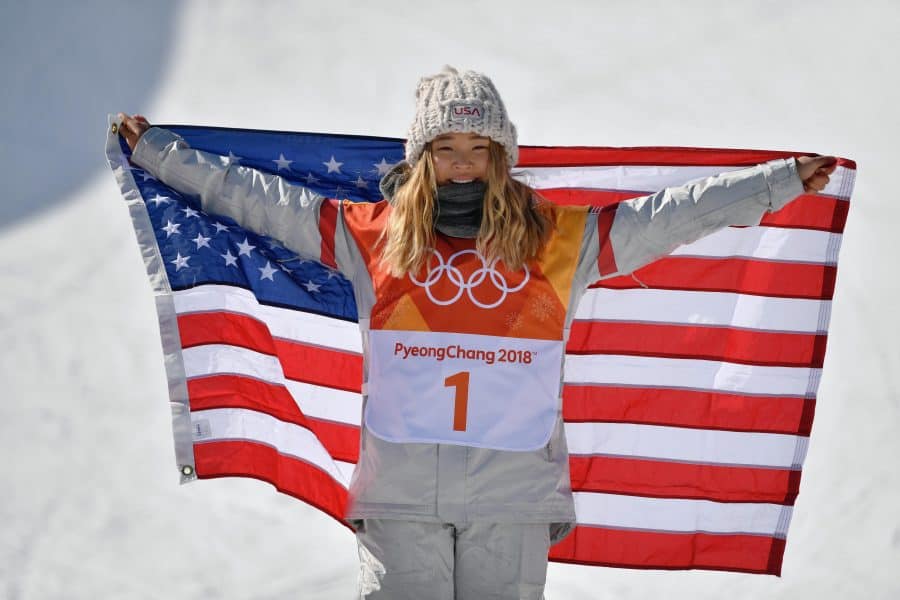Beginning research in the mid-1990s as a graduate student at Indiana University, Andrew Billings has monitored the Olympics for gender gaps in coverage for over 20 years.
Billings, director of the Alabama Program in Sports Communication and Ronald Reagan Chair of Broadcasting, has been looking for how much coverage the Olympics is dedicating to male and female athletes. Monitoring the 2018 Pyeongchang Olympics has led to new findings.
He said that for the longest time, men were slightly shown more in the Summer Olympics with about a 2 percent gap and shown much more in the Winter Olympics with about a 20 to 22 percent gap. Then his trend saw a change.
“All of a sudden, things started to shift in 2012,” he said.
The 2012 London Summer Olympics showed women more than men. Then, he said the 2014 Winter Olympics gender gap closed from about 20 percent to about 4-6 percent. In the 2016 Rio Summer Olympics, women got the majority of the coverage. Next to follow the trend is the 2018 Pyeongchang Winter Olympics.
“And now, what we’re looking at here, for the first time ever for Winter games, is that women will be shown more than men within NBC’s primetime or evening coverage,” he said.
He associates this trend with something different than favoring a gender. He associates it with American patriotism. He said in these three Olympic games in which women were telecasted more – London, Rio and now presumably Pyeongchang – American women have won more gold medals than men.
“Perhaps the Olympics isn’t about gender that much, and it’s much more about simply wanting to watch your home nation do well,” he said. “You don’t really care if it’s male, female or a mixed gender sport, you just like seeing your home nation do well.”
Billings said during the first 10 days of the Pyeongchang Olympics, men were shown 16 percent more. Some women’s games got postponed to the second week, and women’s figure skating, a popular sport, was in the second week as well.
However, he said since day 11, women were shown 80.5 percent of the time during the next five nights collectively. On Feb. 20, women were shown more than men on NBC’s primetime telecast by a ratio of 83-to-1.
“These are splits we’ve never seen before,” he said.
As of Feb. 23, women were receiving about 9 percent more coverage than men altogether.
“So right now, it’s projecting to be the biggest split we’ve ever had favoring women athletes, Winter or Summer,” he said.
Billings and his associates, who have been in touch with NBC, noted that three of the five featured Olympic promos were women, two of the three promos televised during the Super Bowl were women and the majority of the people invited to its West Hollywood shoot were women.
He said this research shows how different the Olympics are from any other sports media because coverage features women’s sports much more. ESPN Sports Center shows women about 2 percent of the time, and Fox Sports Live’s coverage shows about 1 percent women’s sports.
“So it’s really a huge difference compared to any other form of sports media, and I guess it begs the question, ‘Are there things we can take from the Olympics and apply outside of the Olympics to help highlight women athletes more and be able to show women’s athletics more outside of merely that Olympic time period?’” he said.
James Angelini, associate professor of communication at the University of Delaware, joined Billings in the research when a faculty member at Indiana University connected them. He said in the world of sports, which is typically a man’s world, the differences in gender portrayal have always fascinated him.
“I’ve always been really curious about the different ways men and women are portrayed in media,” he said.
Angelini said it has been an interesting trend to see more coverage of women in the Olympics.
“It’s just interesting to see how much value women in sport is and how much value they’re being given, how much they’re being respected as athletes, and so I think it’s just a really fun, interesting, good time for women in sport, and I think the public is becoming more welcoming and becoming more fans of female athletes,” he said.
Angelini said their research findings can impact the sports media industry by showing the gender disparities that are out there and that maybe the industry needs to be giving sports featuring female athletes a fairer shake beyond the Olympics because it is an atypical sporting event where women get a lot of coverage.
“Maybe we need to get more mainstream coverage when it comes to things like the NCAA basketball tournament, women’s World Cup soccer, not that they don’t put that out there, but they’re not necessarily portrayed or featured on the same networks or in the same ways as the equivalent men’s events,” he said. “So, maybe that’s something that this could at least help the industry to understand.”







